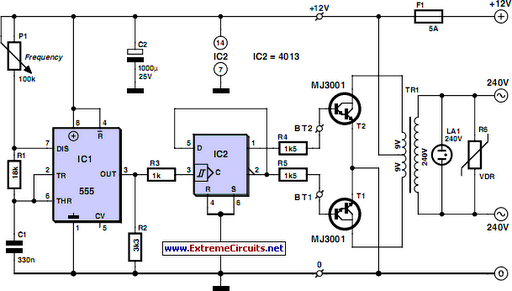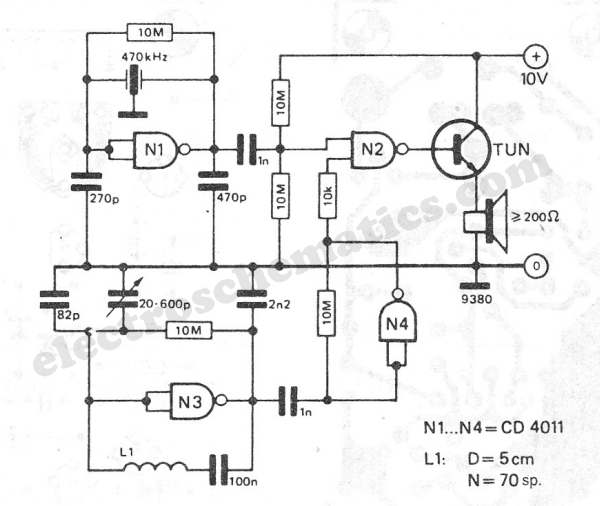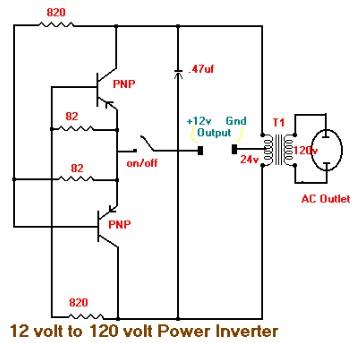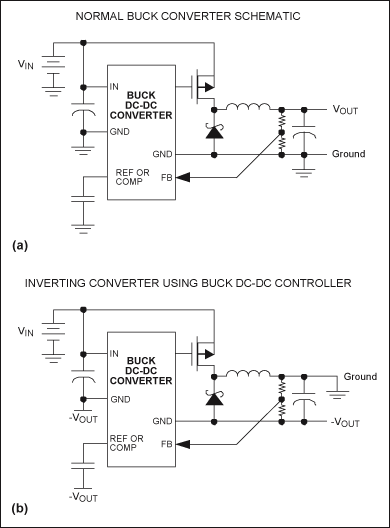
Cheap 12V to 220V Inverter

Although today's electrical appliances are increasingly self-powered, especially portable ones used for camping or summer holidays, there are still occasions when a 230 V AC source is necessary. If the power requirement from such a source remains relatively low—here, a target of 30 VA—building an inverter with simple, inexpensive components is feasible and may be within the reach of many electronics hobbyists. While constructing a more powerful circuit is possible, it introduces complexity due to the heavy currents handled on the low-voltage side, which may not be suitable for this discussion. For instance, to achieve a mere 1 amp at 230 VAC, the battery side would need to manage over 20 ADC. The circuit diagram for this project is straightforward. A classic 555 timer chip, designated as IC1, is configured as an astable multivibrator operating at a frequency close to 100 Hz, which can be precisely adjusted using potentiometer P1. The mark/space ratio (duty cycle) of the 555 output deviates significantly from 1:1 (50%), and this output drives a D-type flip-flop constructed with a CMOS 4013 IC. This configuration produces complementary square-wave signals (antiphase) on the Q and Q outputs, suitable for driving the output power transistors. Since the output current from the CMOS 4013 is minimal, Darlington power transistors are employed to achieve the necessary output current. The MJ3001 transistors from Motorola, which are affordable and widely available, are selected, although any equivalent Darlington power transistor could suffice. These transistors drive a 230 V to 2 G—9 V center-tapped transformer used in reverse to generate the 230 V output. The presence of this voltage is indicated by a neon light, while a voltage-dependent resistor (VDR) type S10K250 or S07K250 is used to suppress spikes and surges that may occur at the transistor switching points. The output signal produced by this circuit is approximately a square wave, although somewhat distorted by the transformer. Nonetheless, it is suitable for powering most electrical devices, including light bulbs, small motors, and electronic power supplies. Although the circuit is designed for operation from a 12 V car battery, the transformer is specified with a 9 V primary. However, at full power, a voltage drop of around 3 V must be considered between the collector and emitter of the power transistors. This relatively high saturation voltage is a common limitation of Darlington configurations, which consist of two transistors in a single package. A printed circuit board (PCB) design is proposed to facilitate construction; as indicated in the component overlay, the PCB only accommodates low-power, low-voltage components. The Darlington transistors should be mounted on a finned anodized aluminum heat sink using standard insulating accessories like mica washers and shouldered washers, as their collectors are connected to the metal casings, which could otherwise lead to short-circuiting. An output power of 30 VA implies a current draw of approximately 3 A from the 12 V battery on the primary side. Therefore, the wires connecting the collectors of the MJ3001s (T1 and T2) to the transformer primary, the emitters of T1 and T2 to the battery negative terminal, and the battery positive terminal to the transformer primary must have a minimum cross-sectional area of 2 mm² to minimize voltage drop. The transformer can be any 230 V to 2 G—9 V type, with either an E/I iron core or toroidal design, rated at around 40 VA. When properly assembled on the specified board, the circuit should function immediately, with the only adjustment required being the output frequency set to 50 Hz using P1. It is important to note that the frequency stability of the 555 timer is relatively poor by modern standards, so it may not be reliable for precise applications like a radio alarm. Additionally, the output voltage of this inverter is as hazardous as the mains supply from domestic power outlets, necessitating the application of the same safety precautions. The project should be housed in a robust ABS or die-cast enclosure to prevent accidental contact with live parts during operation. The circuit can also be adapted to other mains voltages or frequencies, such as 110 V, 115 V, or 127 V at 60 Hz, by utilizing a transformer with a different primary voltage (which becomes the secondary) and making minor adjustments to the timing components R1 and C1 on the 555 timer.Even though today`s electrical appliances are increasingly often self-powered, especially the portable ones you carry around when camping or holidaying in summer, you do still sometimes need a source of 230 V AC - and while we`re about it, why not at a frequency close to that of the mains As long as the power required from such a source remains r elatively low - here we`ve chosen 30 VA - it`s very easy to build an inverter with simple, cheap components that many electronics hobbyists may even already have. Though it is possible to build a more powerful circuit, the complexity caused by the very heavy currents to be handled on the low-voltage side leads to circuits that would be out of place in this summer issue.
Let`s not forget, for example, that just to get a meager 1 amp at 230 VAC, the battery primary side would have to handle more than 20 ADC!. The circuit diagram of our project is easy to follow. A classic 555 timer chip, identified as IC1, is configured as an astable multivibrator at a frequency close to 100 Hz, which can be adjusted accurately by means of potentiometer P1.
As the mark/space ratio (duty factor) of the 555 output is a long way from being 1:1 (50%), it is used to drive a D-type flip-flop produced using a CMOS type 4013 IC. This produces perfect complementary square-wave signals (i. e. in antiphase) on its Q and Q outputs suitable for driving the output power transistors. As the output current available from the CMOS 4013 is very small, Darlington power transistors are used to arrive at the necessary output current.
We have chosen MJ3001s from the now defunct Motorola (only as a semi-conductor manufacturer, of course!) which are cheap and readily available, but any equivalent power Darlington could be used. These drive a 230 V to 2 G— 9 V center-tapped transformer used backwards` to produce the 230 V output.
The presence of the 230 VAC voltage is indicated by a neon light, while a VDR (voltage dependent resistor) type S10K250 or S07K250 clips off the spikes and surges that may appear at the transistor switching points. The output signal this circuit produces is approximately a square wave; only approximately, since it is somewhat distorted by passing through the transformer.
Fortunately, it is suitable for the majority of electrical devices it is capable of supplying, whether they be light bulbs, small motors, or power supplies for electronic devices. Note that, even though the circuit is intended and designed for powering by a car battery, i. e. from 12 V, the transformer is specified with a 9 V primary. But at full power you need to allow for a voltage drop of around 3 V between the collector and emitter of the power transistors.
This relatively high saturation voltage is in fact a shortcoming` common to all devices in Darlington configuration, which actually consists of two transistors in one case. We`re suggesting a PCB design to make it easy to construct this project; as the component overlay shows, the PCB only carries the low-power, low-voltage components.
The Darlington transistors should be fitted onto a finned anodized aluminum heat-sink using the standard insulating accessories of mica washers and shouldered washers, as their collectors are connected to the metal cans and would otherwise be short-circuited. An output power of 30 VA implies a current consumption of the order of 3 A from the 12 V battery at the primary side`.
So the wires connecting the collectors of the MJ3001s [1] T1 and T2 to the transformer primary, the emitters of T1 and T2 to the battery negative terminal, and the battery positive terminal to the transformer primary will need to have a minimum cross-sectional area of 2 mm2 so as to minimize voltage drop. The transformer can be any 230 V to 2 G— 9 V type, with an E/I iron core or toroidal, rated at around 40 VA.
Properly constructed on the board shown here, the circuit should work at once, the only adjustment being to set the output to a frequency of 50 Hz with P1. You should keep in minds that the frequency stability of the 555 is fairly poor by today`s standards, so you shouldn`t rely on it to drive your radio-alarm correctly but is such a device very useful or indeed desirable to have on holiday anyway Watch out too for the fact that the output voltage of this inverter is just as dangerous as the mains from your domestic power sockets.
So you need to apply just the same safety rules! Also, the project should be enclosed in a sturdy ABS or diecast so no parts can be touched while in operation. The circuit should not be too difficult to adapt to other mains voltages or frequencies, for example 110 V, 115 V or 127 V, 60 Hz.
The AC voltage requires a transformer with a different primary voltage (which here becomes the secondary), and the frequency, some adjusting of P1 and possibly minor changes to the values of timing components R1 and C1 on the 555. 🔗 External reference
Let`s not forget, for example, that just to get a meager 1 amp at 230 VAC, the battery primary side would have to handle more than 20 ADC!. The circuit diagram of our project is easy to follow. A classic 555 timer chip, identified as IC1, is configured as an astable multivibrator at a frequency close to 100 Hz, which can be adjusted accurately by means of potentiometer P1.
As the mark/space ratio (duty factor) of the 555 output is a long way from being 1:1 (50%), it is used to drive a D-type flip-flop produced using a CMOS type 4013 IC. This produces perfect complementary square-wave signals (i. e. in antiphase) on its Q and Q outputs suitable for driving the output power transistors. As the output current available from the CMOS 4013 is very small, Darlington power transistors are used to arrive at the necessary output current.
We have chosen MJ3001s from the now defunct Motorola (only as a semi-conductor manufacturer, of course!) which are cheap and readily available, but any equivalent power Darlington could be used. These drive a 230 V to 2 G— 9 V center-tapped transformer used backwards` to produce the 230 V output.
The presence of the 230 VAC voltage is indicated by a neon light, while a VDR (voltage dependent resistor) type S10K250 or S07K250 clips off the spikes and surges that may appear at the transistor switching points. The output signal this circuit produces is approximately a square wave; only approximately, since it is somewhat distorted by passing through the transformer.
Fortunately, it is suitable for the majority of electrical devices it is capable of supplying, whether they be light bulbs, small motors, or power supplies for electronic devices. Note that, even though the circuit is intended and designed for powering by a car battery, i. e. from 12 V, the transformer is specified with a 9 V primary. But at full power you need to allow for a voltage drop of around 3 V between the collector and emitter of the power transistors.
This relatively high saturation voltage is in fact a shortcoming` common to all devices in Darlington configuration, which actually consists of two transistors in one case. We`re suggesting a PCB design to make it easy to construct this project; as the component overlay shows, the PCB only carries the low-power, low-voltage components.
The Darlington transistors should be fitted onto a finned anodized aluminum heat-sink using the standard insulating accessories of mica washers and shouldered washers, as their collectors are connected to the metal cans and would otherwise be short-circuited. An output power of 30 VA implies a current consumption of the order of 3 A from the 12 V battery at the primary side`.
So the wires connecting the collectors of the MJ3001s [1] T1 and T2 to the transformer primary, the emitters of T1 and T2 to the battery negative terminal, and the battery positive terminal to the transformer primary will need to have a minimum cross-sectional area of 2 mm2 so as to minimize voltage drop. The transformer can be any 230 V to 2 G— 9 V type, with an E/I iron core or toroidal, rated at around 40 VA.
Properly constructed on the board shown here, the circuit should work at once, the only adjustment being to set the output to a frequency of 50 Hz with P1. You should keep in minds that the frequency stability of the 555 is fairly poor by today`s standards, so you shouldn`t rely on it to drive your radio-alarm correctly but is such a device very useful or indeed desirable to have on holiday anyway Watch out too for the fact that the output voltage of this inverter is just as dangerous as the mains from your domestic power sockets.
So you need to apply just the same safety rules! Also, the project should be enclosed in a sturdy ABS or diecast so no parts can be touched while in operation. The circuit should not be too difficult to adapt to other mains voltages or frequencies, for example 110 V, 115 V or 127 V, 60 Hz.
The AC voltage requires a transformer with a different primary voltage (which here becomes the secondary), and the frequency, some adjusting of P1 and possibly minor changes to the values of timing components R1 and C1 on the 555. 🔗 External reference
Warning: include(partials/cookie-banner.php): Failed to open stream: Permission denied in /var/www/html/nextgr/view-circuit.php on line 713
Warning: include(): Failed opening 'partials/cookie-banner.php' for inclusion (include_path='.:/usr/share/php') in /var/www/html/nextgr/view-circuit.php on line 713





